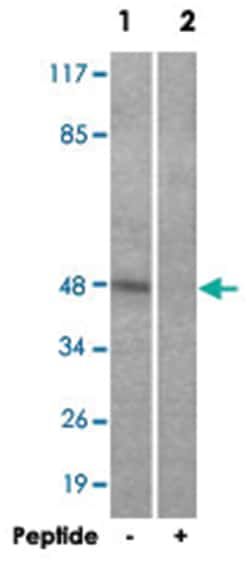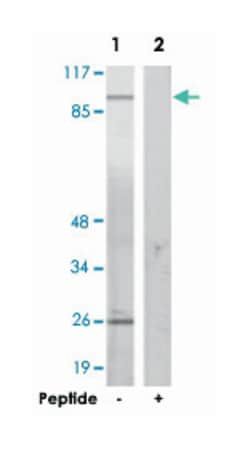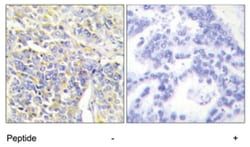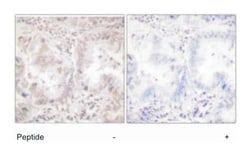ADRB2 Rabbit anti-Human, Mouse, Polyclonal Antibody, Abnova™
Manufacturer: Abnova Corporation
Select a Size
| Pack Size | SKU | Availability | Price |
|---|---|---|---|
| Each of 1 | 89-119-641-Each-of-1 | In Stock | ₹ 55,892.00 |
89-119-641 - Each of 1
In Stock
Quantity
1
Base Price: ₹ 55,892.00
GST (18%): ₹ 10,060.56
Total Price: ₹ 65,952.56
Antigen
ADRB2
Classification
Polyclonal
Description
Rabbit polyclonal antibody raised against synthetic peptide of ADRB2.
Formulation
In PBS, 150mM NaCl, pH 7.4 (50% glycerol, 0.02% sodium azide)
Gene Accession No.
P07550
Gene Symbols
ADRB2
Immunogen
A synthetic peptide corresponding to residues surrounding S346 of human ADRB2.
Regulatory Status
RUO
Gene ID (Entrez)
154
Target Species
Human, Mouse
Form
Liquid
Applications
ELISA, Immunofluorescence, Immunohistochemistry, Western Blot
Conjugate
Unconjugated
Dilution
Western Blot (1:500∼1:1000) Immunohistochemistry (1:50∼1:100) Immunofluorescence (1:500∼1:1000) ELISA (1:5000) The optimal working dilution should be determined by the end user.
Gene
ADRB2
Gene Alias
ADRB2R/ADRBR/B2AR/BAR/BETA2AR
Host Species
Rabbit
Quantity
100 μg
Primary or Secondary
Primary
Test Specificity
This antibody is specific to ADRB2.
Content And Storage
Store at -20°C.Aliquot to avoid repeated freezing and thawing.
Description
- This gene encodes beta-2-adrenergic receptor which is a member of the G protein-coupled receptor superfamily
- This receptor is directly associated with one of its ultimate effectors, the class C L-type calcium channel Ca(V)1.2
- This receptor-channel complex also contains a G protein, an adenylyl cyclase, cAMP-dependent kinase, and the counterbalancing phosphatase, PP2A
- The assembly of the signaling complex provides a mechanism that ensures specific and rapid signaling by this G protein-coupled receptor
- This gene is intronless
- Different polymorphic forms, point mutations, and/or downregulation of this gene are associated with nocturnal asthma, obesity and type 2 diabetes
- [provided by RefSeq



